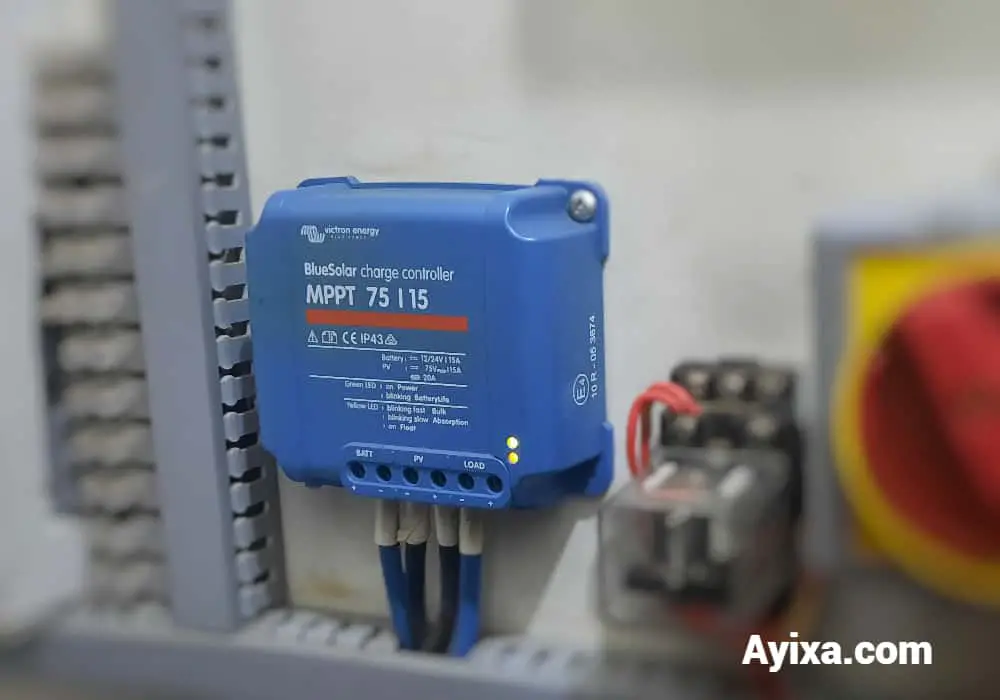Yes, a solar charge controller needs and uses some power to keep its internal electronics for switching, regulation, lighting the LCD display and indicator LEDs.
The currents drawn are usually low and are of the order of a few mA.
This current draw drains some of the battery’s power at night when the the battery charge is not being replenished by the solar panels.
You can find the current draw of a solar charge controller by consulting the charge controller’s datasheet.
Can a Charge Controller Drain a Battery?
Yes, though not common, it is possible for a charge controller to drain a battery flat under certain conditions, such as when a battery is connected to a charge controller for several weeks or months depending on its capacity and the battery power is not being replenished over that period.
How long a charge controller takes to discharge a battery?
The time it takes a solar charge controller to drain a battery mainly depends on the battery’s capacity (Ah), the state of charge (whether fully charged or otherwise) and the current draw of the charge controller (mA).
So, it takes a longer time to discharge a fully charged, large capacity battery when connected to a low power consumption charge controller.
For example, it takes about 70 days for a solar charge controller with a self consumption current draw of 15mA to drain a 50Ah AGM to its recommended depth of discharge of 50%.
How Many Amps and Power a Solar Charge Controller Uses
Solar charge controllers usually consume a little power (self consumption), about 120 – 240 mW or 10 – 20mA at 12V depending on the controller design.
For a 24V solar system , the power consumption is about the same but the current drawd by the charge controller is usually lower.
What to Do if You Suspect the Charge Controller is Draining the Battery?
Usually the power draw of the charge controller is low unless there is a fault with the controller or there is an appliance you are not aware of drawing power through the charge controller.
To investigate, you can check the charge controller’s temperature.
Make sure ONLY the battery is connected. If it is warm or hot to the touch then there is likely to be considerable power draw from an appliance or a fault in the controller.
You can then proceed to measure the current draw using a good quality multimeter set to read mA.
Compare the current draw (mA) with what the manufacturer specifies in the datasheet.
If there is a large discrepancy then there is possibly a problem with the controller or a parasitic load still connected.
Final Word
Whereas solar charge controllers use some power for their internal electronics to work, the current draw is usually small and typically about 10-20mA for a 12V controller.
It can take several months to drain the usable capacity of a 50Ah AGM battery assuming it was not charged at all over that period.
So if you your solar system batteries are being drained, in most cases, it should not be top of the list of the likely causes of battery drain.
Related Posts
